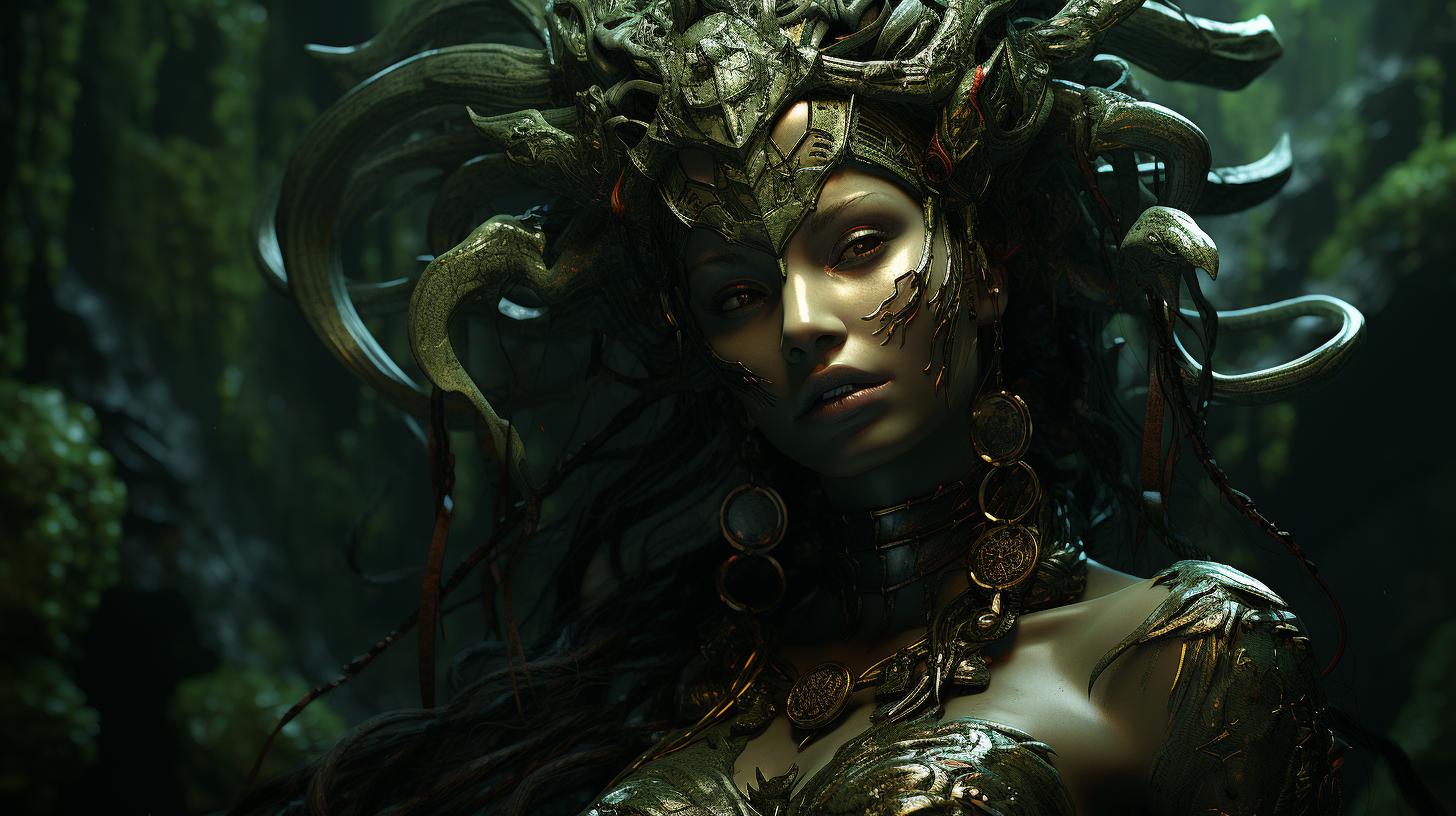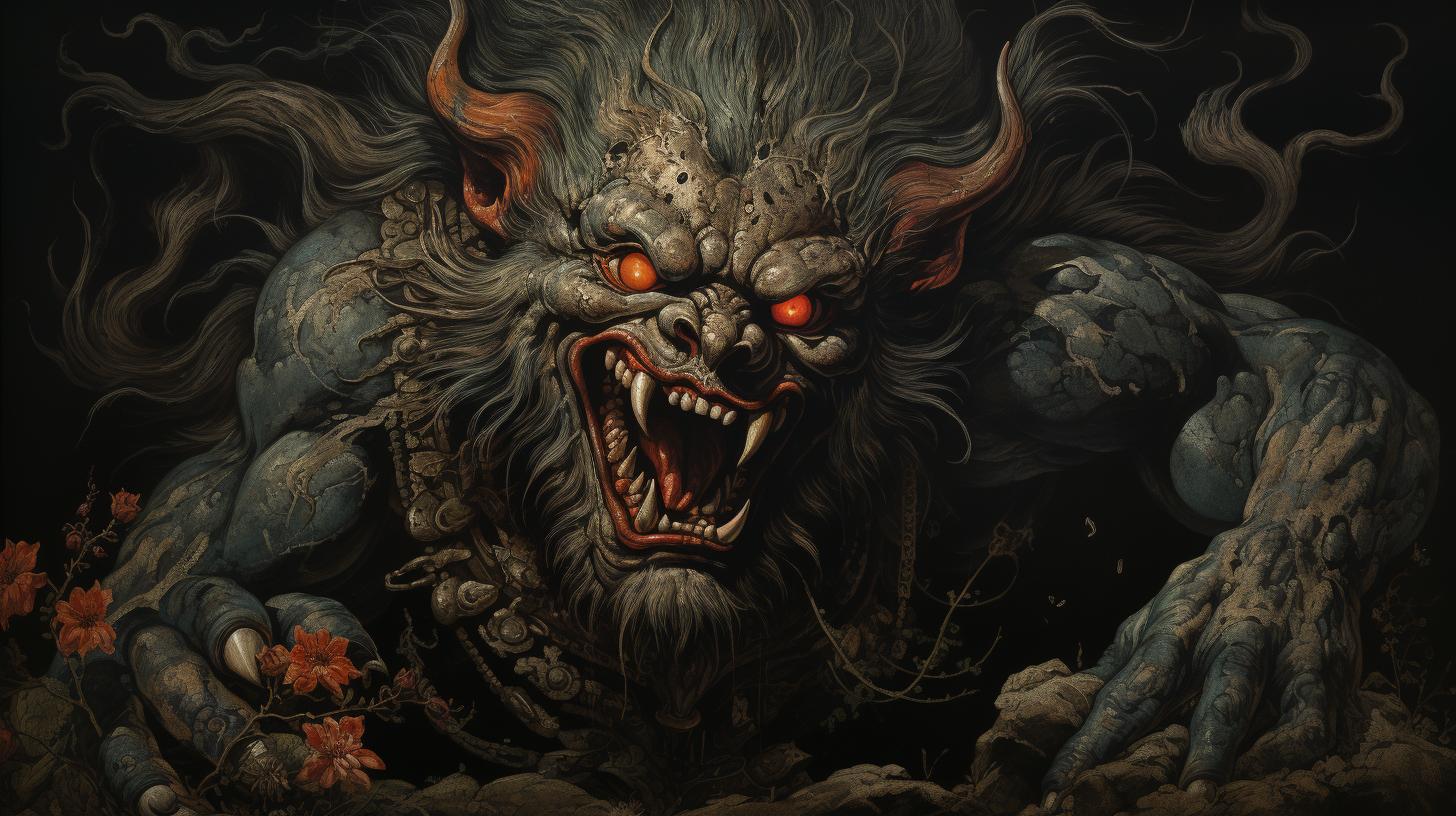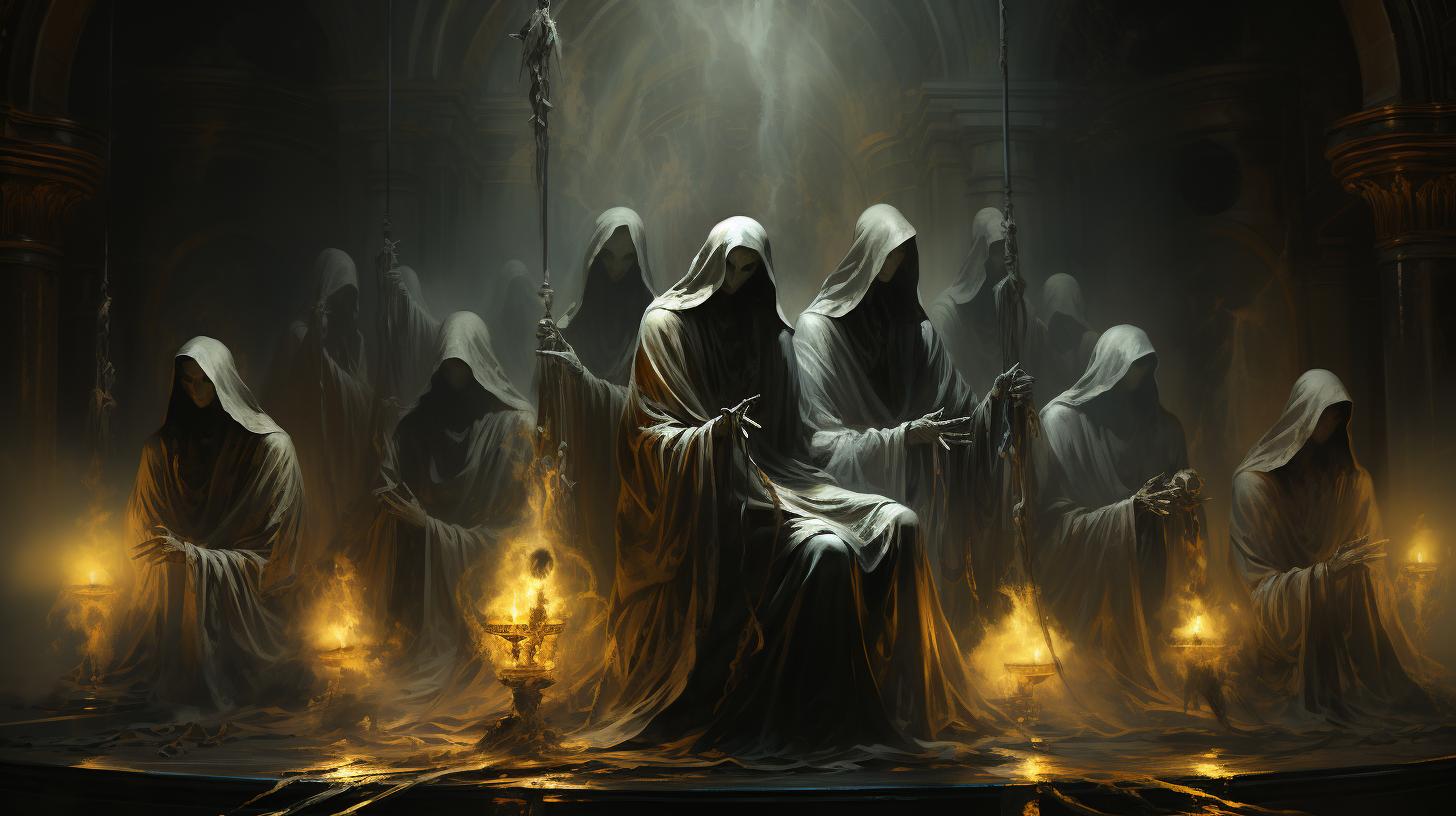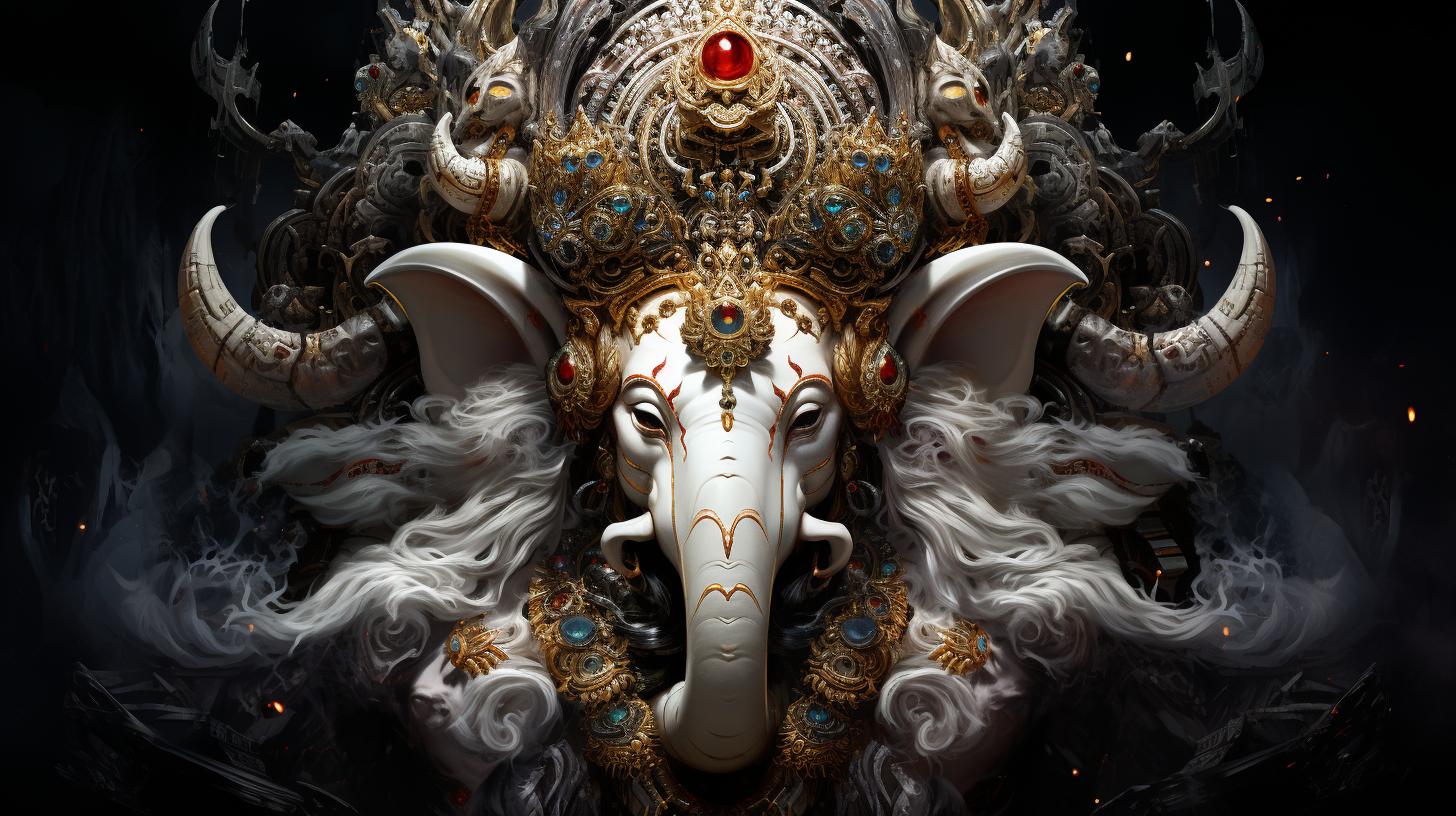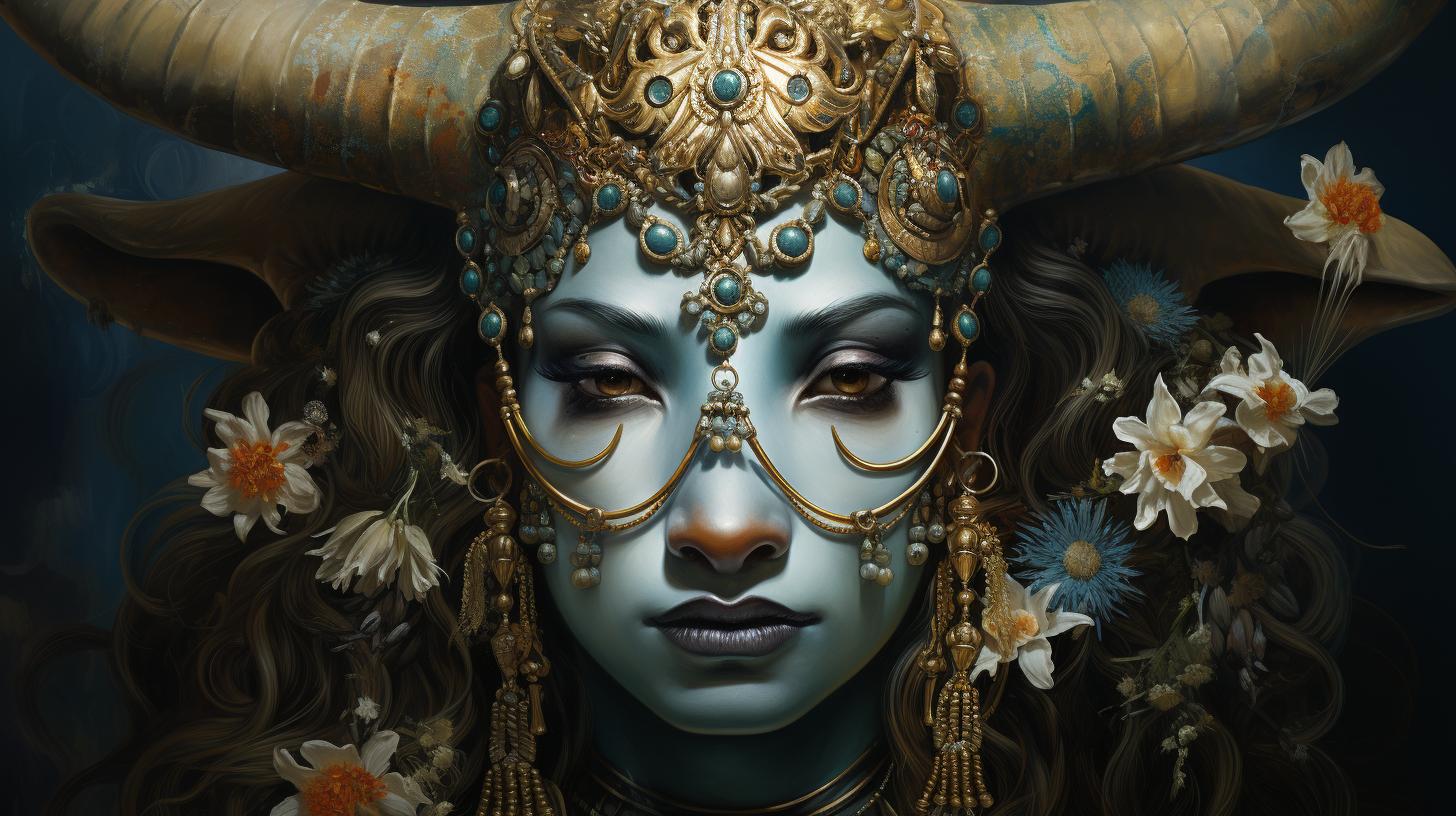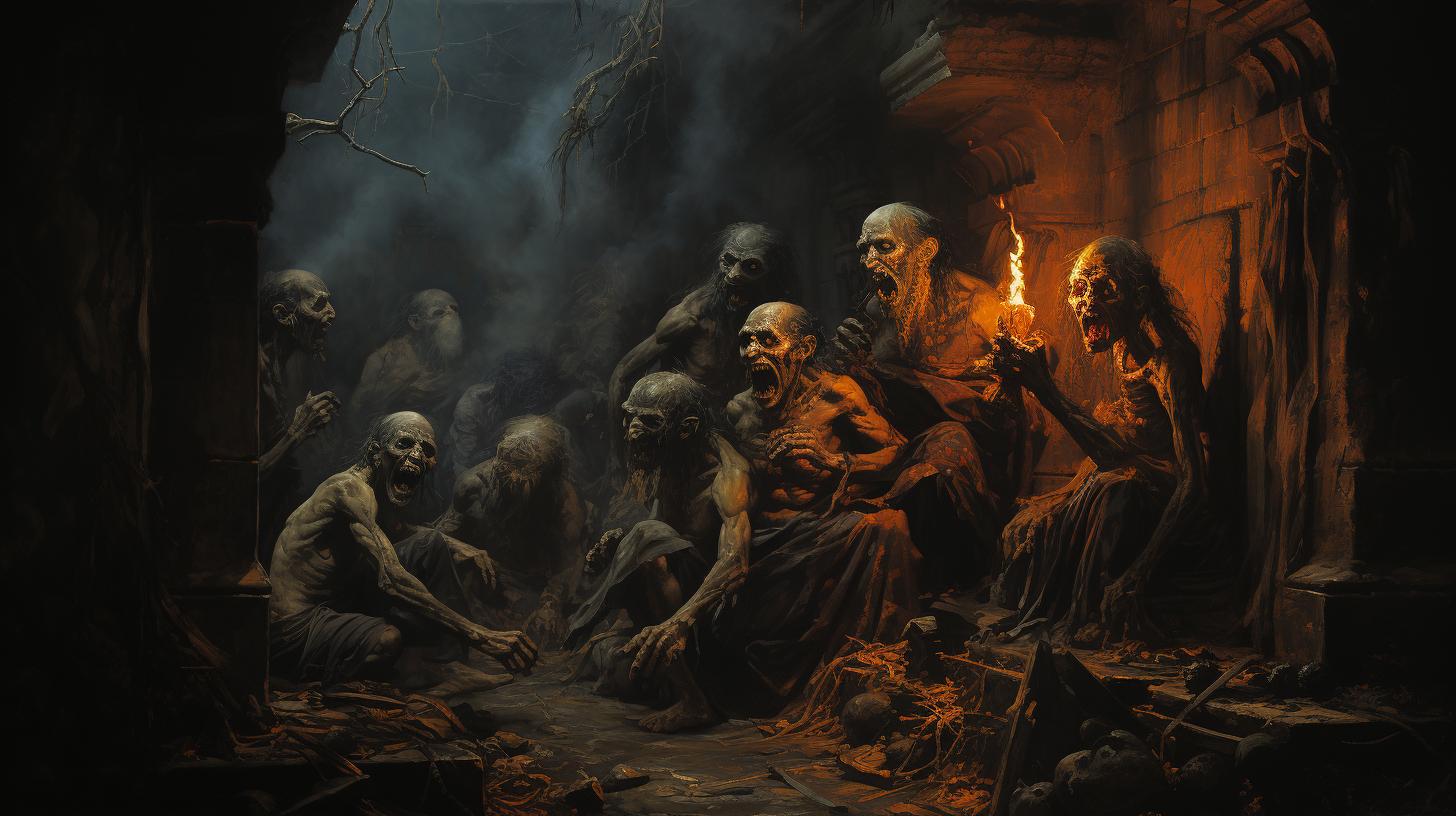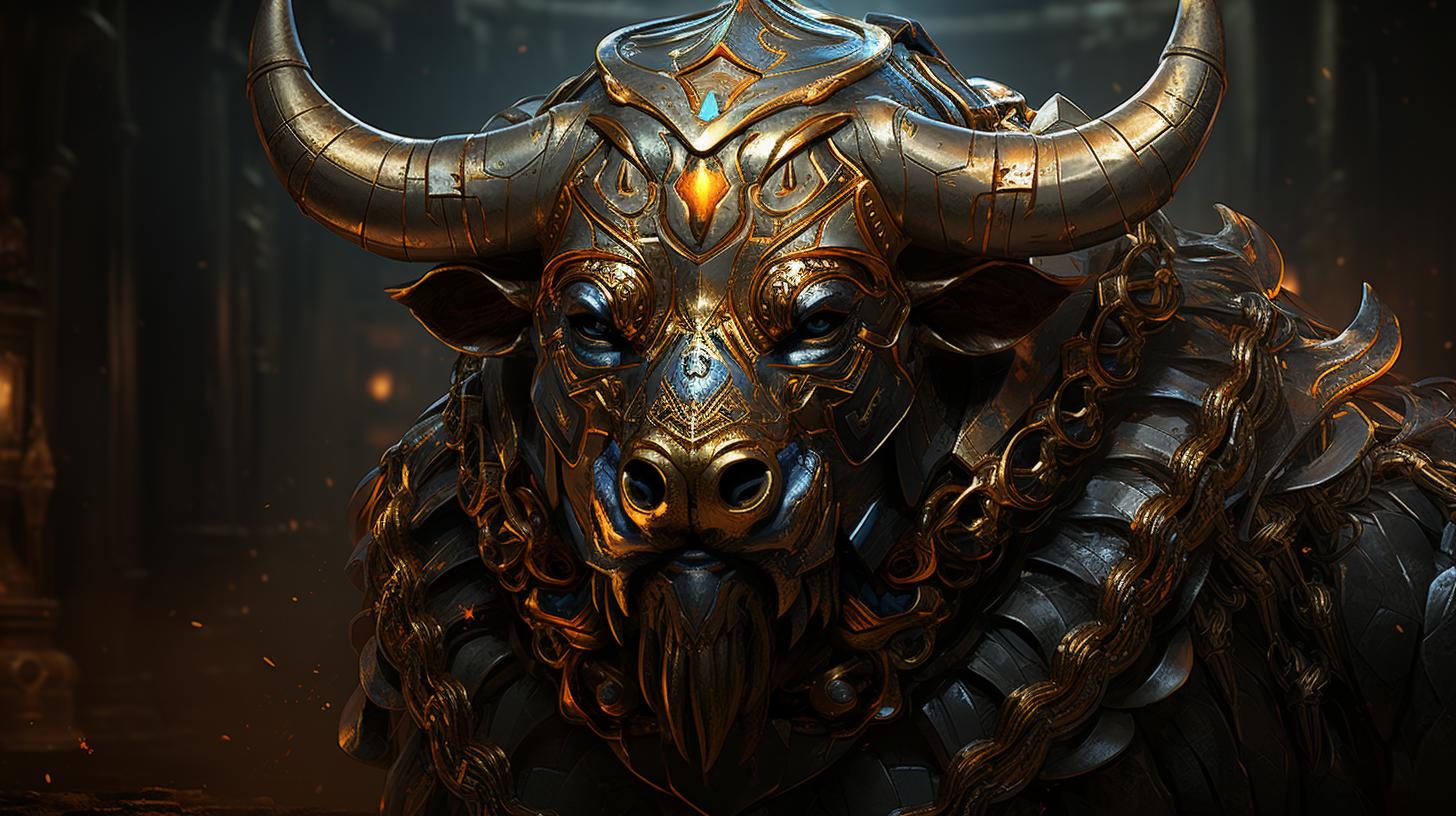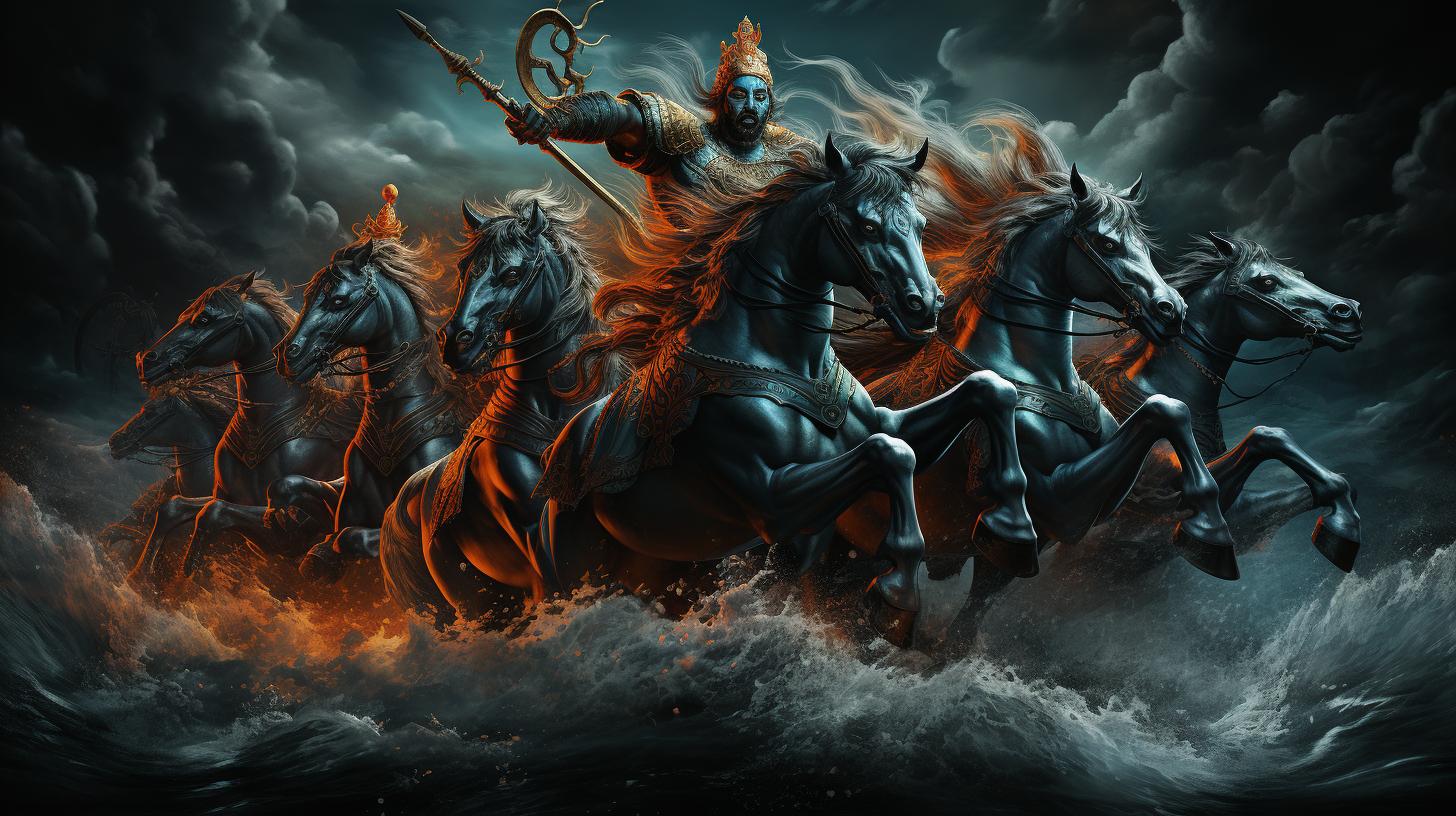Naga Myth: Unveiling the Serpentine Legends and Folklore from Asia
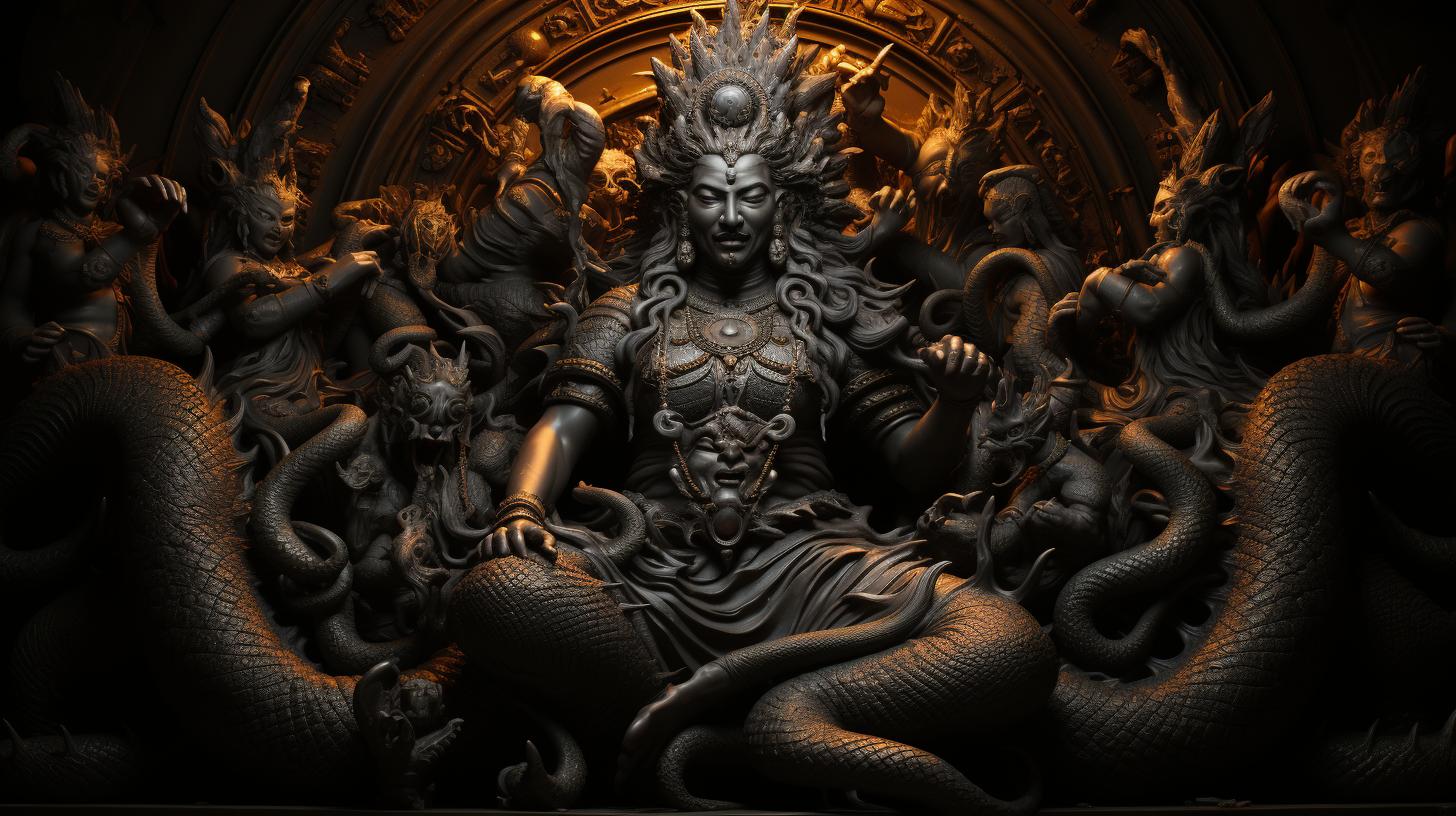
The Naga myth is a fascinating blend of cultural and religious traditions in Asia, including Hinduism, Buddhism, and Jainism. These serpent-like creatures, part human and part snake, play a prominent role in the legends and folklore of the region.
Associated with water, such as rivers and lakes, Nagas are believed to possess power and intelligence. They are depicted in various forms, from serpents with hoods to human torsos with snake tails.
From their origins in Hindu scriptures to their portrayal in Buddhist art, Nagas hold immense cultural significance in Asia.
The Origins of Nagas in Hinduism
The mythology of nagas traces its roots back to Hinduism, where these serpent-like beings hold a significant place in the ancient scriptures and legends. Let’s explore the origins and various aspects associated with nagas in Hindu beliefs.
The Sage Kashyapa and Kadru
According to Hindu mythology, nagas are believed to be the offspring of the revered sage Kashyapa and his wife, Kadru. Kashyapa is considered the father of all creatures, and Kadru is often referred to as the mother of nagas.
This lineage highlights the divine connection and importance of nagas in the Hindu mythological context.
Nagas as Guardians of the Seas and Rivers
Nagas are prominently associated with water bodies, particularly the seas and rivers. In Hinduism, they are regarded as fierce protectors and guardians of these aquatic realms. Their presence symbolizes their role in safeguarding the life-giving forces of water and maintaining the balance of nature.
Nagas’ Association with Fertility and Disasters
Within Hindu beliefs, nagas are associated with both fertility and disasters related to water. On one hand, they are seen as bestowers of fertility and prosperity, being connected to the powers of creation and abundance.
On the other hand, nagas have also been attributed to natural calamities such as floods and droughts, underscoring their mythical influence over the elements of water and land.
Depictions and Representations of Nagas in Hindu Art
Within the realm of Hindu art, nagas hold a prominent place, captivating both artists and devotees alike.
They are the subjects of intricate sculptures found in temples across South India, showcasing their unique blend of human and serpent forms.
Naga Sculptures in South Indian Temples
The temples of South India boast a rich collection of naga sculptures, breathing life into the mythical creatures. These sculptures capture the mesmerizing allure of nagas with their intertwining serpentine bodies and human torsos.
Adorned with elaborate jewelry and often depicted in graceful poses, these sculptures embody the fascinating essence of nagas.
Snake Charms: Nagas as Objects of Worship
Nagas, revered as powerful and divine beings, have become objects of deep reverence in Hinduism. Devotees offer their prayers and seek blessings from these serpentine deities, considering them protectors and guardians.
Simple serpent idols made of stone or metal are also worshipped and believed to bring fortune and protection.
As worshipped objects, these snake charms find their place in homes, temples, and sacred spaces.
Devotees believe that by worshipping nagas, they can seek blessings for fertility, prosperity, and protection from natural calamities.
- Naga sculptures in South Indian temples showcase the unique fusion of human and serpent forms.
- These sculptures depict nagas with intricate jewelry and graceful postures.
- Nagas are objects of worship, symbolizing protection and fortune.
- Simple serpent idols are worshipped in homes and sacred spaces to seek blessings.
The artistry and symbolism depicted in Hindu art capture the magical and ethereal qualities of nagas, leaving a lasting impression on those who witness their divine charm.
Nagas in Buddhist Beliefs and Traditions
Within Buddhist beliefs and traditions, Nagas hold a significant place as deities and protectors. They are believed to reside in sacred locations such as the mythical Mount Meru, as well as in watery environments including streams and caves.
Nagas as Deities and Protectors in Buddhism
Nagas are worshipped and revered as deities in Buddhism. They are seen as powerful and benevolent beings, often depicted with multiple heads that tower above images of the meditating Buddha. These representations highlight the Nagas’ protective role, safeguarding Buddhism and its followers from harm.
Mucalinda: The Naga Guardian of the Buddha
One notable example is the story of Mucalinda, the Naga who protected the Buddha. As the legend goes, when the meditating Buddha was caught in a violent storm, Mucalinda emerged from beneath the earth and coiled its massive body around him, providing both shelter and protection.
This story serves as a symbol of the Nagas’ commitment to safeguarding enlightened beings and preserving the Buddhist teachings.
The presence of Nagas in Buddhism reflects their divine status and the reverence they receive within Buddhist beliefs and practices.
Whether through their role as deities or as protectors, Nagas contribute to the rich tapestry of Buddhist myth and serve as a reminder of the interconnectedness of different realms in the religious and spiritual realms of Asia.
The Jain Perspective on Nagas
The Jain tradition also holds a significant perspective on the mystical beings known as Nagas. Within Jainism, Parshvanatha, one of the Tirthankaras, is often depicted with Naga hoods above his head.
This representation symbolizes the protection and guidance provided by the Nagas in the Jain belief system.
Parshvanatha and the Nagas
Parshvanatha, the 23rd Tirthankara, is closely associated with Nagas. According to Jain mythology, Parshvanatha gained enlightenment while meditating under a divine Dharanendra tree, where Nagas provided protection from harmful elements. The Nagas are believed to have shielded Parshvanatha from a ferocious storm as he achieved spiritual awakening.
Nagas as Symbols of Protection in Jainism
In Jainism, Nagas are regarded as symbols of protection and guardianship. They are considered to be divine beings that safeguard the spiritual path of Jain practitioners. Depicted in artwork and sculptures, Nagas are shown surrounding and supporting Tirthankaras, representing their role in shielding devotees from worldly distractions and guiding them towards spiritual liberation.
The Jain perspective on Nagas elucidates their significance in the Jain spiritual journey, highlighting their role as protectors and allies to those seeking enlightenment. Their presence in Jain art and mythology adds depth to the rich tapestry of beliefs and traditions within Jainism.
Naga Females: Naginis and Nagis
The captivating world of Naga myth extends beyond the powerful male Nagas. In this realm, we encounter the enchanting female counterparts known as Naginis and Nagis. These mesmerizing princess serpents possess a beauty that leaves admirers in awe.
The Enchanting Princess Serpents
Naginis, also referred to as Nagis, are mythical beings that fascinate with their extraordinary allure. These female Nagas are believed to possess an otherworldly grace, captivating all who behold them. Their serpentine features intertwine seamlessly with their captivating human qualities, creating an irresistible combination.
Mythical Lineages and Real-world Claims
The lineage of Naginis and Nagis is shrouded in both myth and reality. Some ancient dynasties in India and the former Indochina region have claimed to trace their ancestry back to the union of a human and a Naga.
These legendary lineages evoke intrigue and curiosity, adding to the mystique surrounding these extraordinary beings.
- Ancient Indian dynasties and their connection to Naginis and Nagis
- Stories and tales that attribute human-Naga unions
- The significance of mythical lineage in ancient cultures
- The allure and fascination of Naginis and Nagis in contemporary society
The realm of Naga females enriches the tapestry of the Naga myth, showcasing their captivating beauty and intriguing lineage.
Exploring their legends and stories gives us a deeper understanding of the multifaceted world of Nagas and their enduring significance in Asian culture.
Comparing Nagas with Medusa in Greek Mythology
In this section, we explore the intriguing parallels and distinctions between Nagas in Asian mythology and Medusa in Greek mythology.
While both share serpent-like features, their cultural contexts and associated themes differ significantly.
Medusa: A Gorgon with Serpentine Features
Medusa, a prominent figure in Greek mythology, is known as a Gorgon with a visage consisting of snakes instead of hair. She possesses a gaze that could turn individuals to stone.
Medusa’s serpent-like appearance is distinctly Greek, and her story is deeply rooted in the mythological tales of ancient Greece.
Similarities and Differences between Nagas and Medusa
Although both Nagas and Medusa share serpentine attributes, they belong to distinct mythological traditions. Here, we highlight the similarities and differences between these fascinating creatures:
Similarities:
- Both Nagas and Medusa embody the presence of serpents, forming a significant part of their physical attributes.
- Nagas, like Medusa, possess a level of power and mystique that captures the imagination of those who encounter their stories.
- Both mythological beings have connections to water and its symbolism in various cultures.
Differences:
- Nagas originate from the traditions of Hinduism, Buddhism, and Jainism, while Medusa is a product of Greek mythology.
- Medusa’s gaze possesses a unique ability to turn people into stone, an attribute not associated with Nagas.
- Nagas are seen as semi-divine creatures, associated with fertility, protection, and cosmic forces, whereas Medusa’s story revolves primarily around her encounters with heroes and gods.
- The cultural significance and portrayal of Nagas and Medusa differ significantly within their respective mythological frameworks.
By examining the similarities and differences between Nagas and Medusa, we gain a deeper understanding of the diverse mythologies that exist worldwide and the distinct perspectives they offer.
The Cultural Significance of Nagas in Asia
The mythological creatures known as Nagas hold immense cultural significance across various regions in Asia. Revered in Hinduism, Buddhism, and Jainism, Nagas play a pivotal role in art, symbolism, and the interconnection of human and serpent realms.
Nagas in Hindu, Buddhist, and Jain Art
Representations of Nagas can be found in the vibrant art forms of Hinduism, Buddhism, and Jainism. Hindu temples, particularly in southern India, showcase intricate sculptures depicting Nagas with human torsos or even as simple serpents, serving as objects of worship.
Likewise, Buddhist art often portrays Nagas as deities with multiple heads, intertwined with images of meditating Buddhas. Jain art highlights the association between Nagas and the Tirthankara Parshvanatha, depicting the serpent hoods upon his head.
Nagas as Symbols of Cosmic Forces
Nagas are often regarded as symbols of cosmic forces in Asian mythologies. In Hinduism, they are associated with fertility and the protection of the seas, rivers, and water bodies. Nagas in Buddhism are thought to reside in lands linked to water, such as caves and streams, symbolizing the interplay of earthly and aquatic realms.
Jainism views Nagas as protectors and important elements in the cosmic order.
Nagas’ Role in Connecting the Human and Serpent Realms
Nagas act as bridges connecting the human and serpent realms in Asian mythologies. With their serpentine nature, they embody the power and mysteries of the natural world. Nagas are considered guardian figures, intermediaries between humans and the aquatic environment they inhabit.
The legends and folklore surrounding Nagas serve to emphasize the harmonious coexistence of different realms and the interdependence between humans and nature.
.











